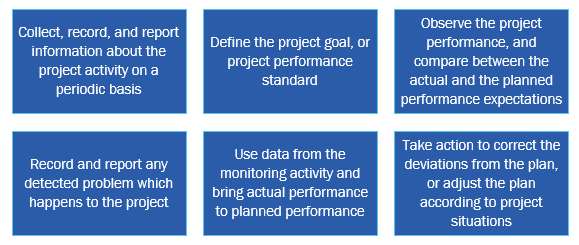October 17, 2017 - by Ahesanali Vijapura
Although the QA testing process is detail-oriented, and often time consuming, it is instrumental in making sure that the entire testing effort is successful, helping deliver reliable software. One way to guarantee a positive outcome from QA testing is to embrace certain best practices while performing test management:
PLANNING
Risk Analysis
The process of analyzing risks associated with a project is the first step to consider before starting any project. Any project is bound to contain risks; therefore early risk detection and identification of its solution will help the project team to circumvent potential losses, and save on project cost. For the success of your project, risks should be identified as soon as possible along with their corresponding mitigation. Risk management helps in:
- Early forecast of risks
- Estimating potential loss due to identified risks
- Deciding how to manage the identified risks
- Avoiding the future consequences
Test Estimation
Test estimation approximates how long a task would take to complete. There are two questions you should be asking yourself in regards to test estimation:
- How long the testing process will take?
- How much will the testing process cost?
You can use one or more of the following techniques to calculate test estimation:
- Work Breakdown Structure
- 3-Point Software Testing Estimation Technique
- Wideband Delphi technique
- Function Point/Testing Point Analysis
- Use – Case Point Method
- Percentage distribution
- Ad-hoc method
Test Planning
The test planning stage involves creation of a test plan – a document which describes the scope, approach, resources, and schedule of intended test activities. It identifies features to be tested, testing tasks, who will do each task, degree of tester independence, the test environment, the test design techniques, entry and exit criteria to be used, and any risks requiring contingency planning. The format and content of a software test plan may vary depending on the processes, standards, and test management tools being implemented.
Test Organization
Software testing is a critical part of the software release model. However, the presence of different technologies and platforms, user behavior, user expectations, and a wide variety of testing skills makes the process rather cumbersome. To achieve the expected quality, you can choose from a variety of testing techniques including:
- Centralized Testing
- Distributed Testing
- Federated Model
- Organizational Model Comparison
EXECUTION
Test Monitor and Control
Overseeing all metrics necessary to ensure that the project is running well, on schedule, and not over budget is the first step in the test execution stage.

Issue Management
No matter how big or small a project is, it is susceptible to risks. And when a risk occurs, it becomes an issue. For example, there might be a sudden reduction in the project budget, or the project team lacks the skills to complete the project, or the project schedule may be too tight for the team to complete the project on time. If any of this happens, you are bound to 1) miss the deadline, 2) exceed your budget, and 3) lose the trust of your customer or stakeholders. Therefore, it is important to identify risks ahead of time, and take action before they snowball into a bigger issue.
Test Report and Evaluation
The test evaluation stage involves organization and presentation of a summary analysis of the test results and key measures of testing for review and assessment, typically by key quality stakeholders. In addition, the test evaluation report may contain a general statement of relative quality and provide recommendations for future test efforts.
Ensure Quality
Evaluating a system and its components to check if it satisfies the specified requirements or not is a critical part of the software development process. Embracing best practices at every stage of the testing process enables you to identify gaps, errors, or missing requirements in contrast to the actual requirements, and make sure the software works as intended.
